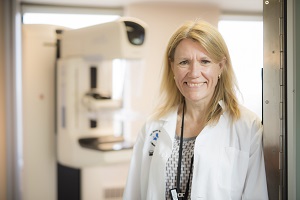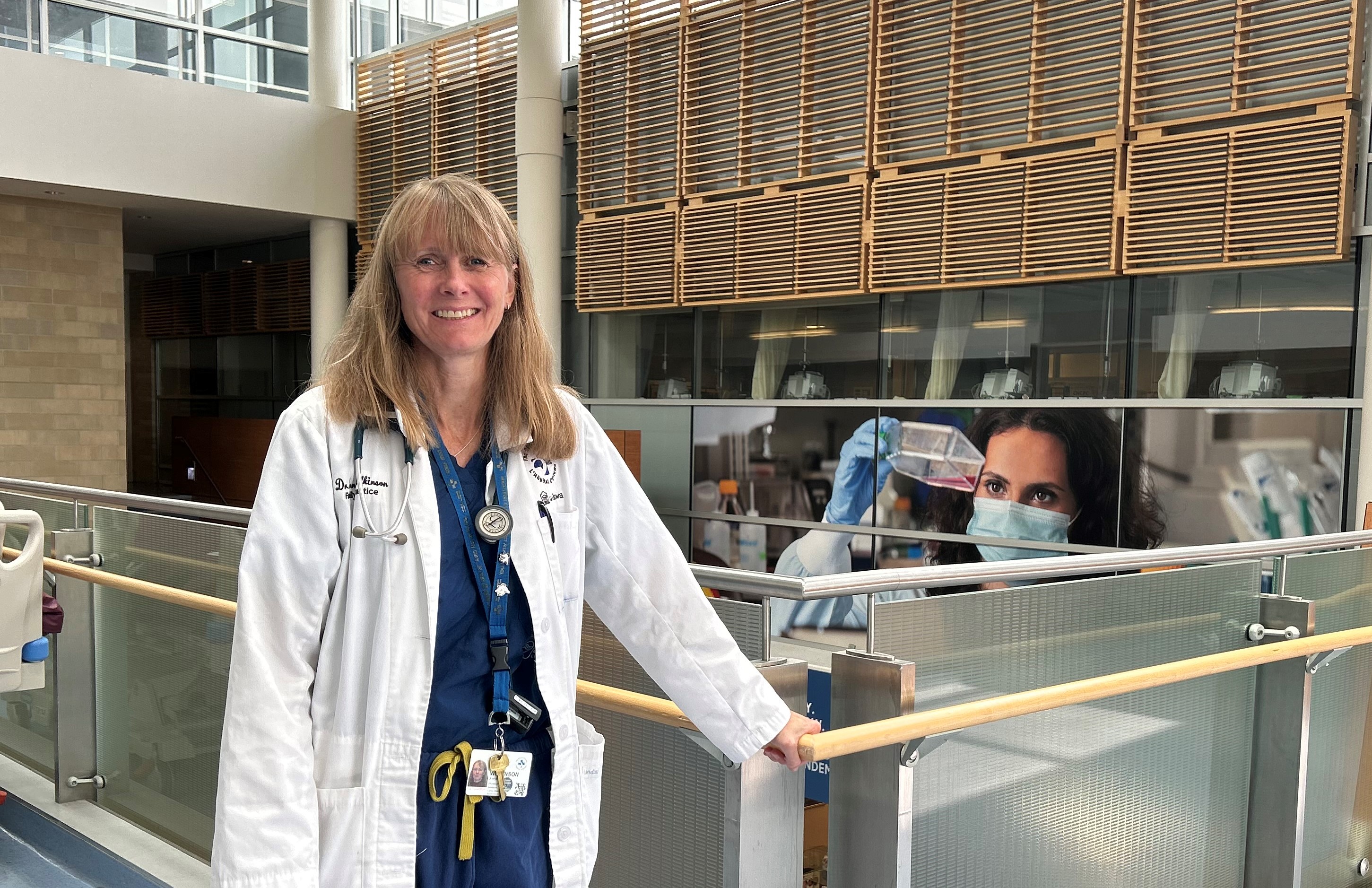 "Our findings are timely, considering the recent draft recommendations from the U.S. Preventive Services Task Force that breast cancer screening begin at age 40,” said Dr. Jean Seely. Read this Q&A with Dr. Seely to learn more about what sparked her passion for medicine and research.Canadian provinces and territories that allowed women 40-49 to self-refer for organized breast cancer screening programs with annual mammograms had better survival and lower breast cancer mortality rates compared with those that did not, according to a study published in the Journal of Clinical Oncology.
"Our findings are timely, considering the recent draft recommendations from the U.S. Preventive Services Task Force that breast cancer screening begin at age 40,” said Dr. Jean Seely. Read this Q&A with Dr. Seely to learn more about what sparked her passion for medicine and research.Canadian provinces and territories that allowed women 40-49 to self-refer for organized breast cancer screening programs with annual mammograms had better survival and lower breast cancer mortality rates compared with those that did not, according to a study published in the Journal of Clinical Oncology.
For women in their 40s living in areas with screening programs, the likelihood of surviving breast cancer 10 years after a diagnosis was 84.8%, compared to 82.9% in jurisdictions without these programs. This survival benefit was even greater in women aged 45-49: 10-year survival was 83.5% in areas without screening compared to 86.0% where screening was available.
The researchers correlated provincial/territorial screening participation rates with 10-year survival, and found that increased screening rates corresponded to higher survival. Ten-year survival was 81.8% in the jurisdiction with the lowest screening rates, increasing to 85.8% when the highest percentage of women were screened.
"Our findings are timely, considering the recent draft recommendations from the U.S. Preventive Services Task Force that breast cancer screening begin at age 40,” said co-lead author Dr. Jean Seely, Head of Breast Imaging at The Ottawa Hospital and professor at the University of Ottawa.
Using data from the Canadian Cancer Registry at Statistics Canada, the research team, including Larry F. Ellison and Jean-Michel Billette, looked at 50,921 women aged 40 to 59 who were diagnosed with breast cancer between 2002 and 2007.
They also found that breast cancer was responsible for 90.7% of deaths among women in their 40s who were diagnosed with breast cancer, compared to 80.9% for women in their 50s and 61.5.% for women in their 60s.
In addition, the rate of breast cancer diagnosis among women aged 40 to 49 was similar in screening and non-screening areas. However, the rate of breast cancer diagnosis was higher in women 50-59 who lived in areas that did not screen women 40-49. This suggests that a benefit of early detection of breast cancer in women in their 40s may be reduced rates of breast cancer in women in their 50s.
 “The increased survival we saw likely underestimates the true benefit of breast cancer screening before age 50, due to recent treatment advances, and the fact that only a third to a half of women living in the screening jurisdictions were screened," said Dr. Anna Wilkinson.“The increased survival we saw likely underestimates the true benefit of breast cancer screening before age 50, due to recent treatment advances, and the fact that only a third to a half of women living in the screening jurisdictions were screened," said co-lead author Dr. Anna Wilkinson, a family physician and general practioner-oncologist at The Ottawa Hospital and associate professor at the University of Ottawa.
“The increased survival we saw likely underestimates the true benefit of breast cancer screening before age 50, due to recent treatment advances, and the fact that only a third to a half of women living in the screening jurisdictions were screened," said Dr. Anna Wilkinson.“The increased survival we saw likely underestimates the true benefit of breast cancer screening before age 50, due to recent treatment advances, and the fact that only a third to a half of women living in the screening jurisdictions were screened," said co-lead author Dr. Anna Wilkinson, a family physician and general practioner-oncologist at The Ottawa Hospital and associate professor at the University of Ottawa.
The team previously found that women aged 40-59 living in Canadian provinces and territories with organized screening programs for women in their 40s had lower proportions of advanced breast cancer compared to women living in areas without such programs. They also found that the rate of metastatic breast cancer in women 50-59 has increased by 10.3% since the guidelines recommended against screening women in their 40s in 2011.
The provinces and territories with the ability to self-refer and annual screening reminders for women in their 40s during the study period were British Columbia, Alberta, Northwest Territories, Nova Scotia, and Prince Edward Island. Currently, only Nova Scotia, Prince Edward Island and Yukon have annual reminders.
Full reference: Impact of Breast Cancer Screening on 10-Year Net Survival in Canadian Women Age 40-49 Years. Anna N. Wilkinson, Larry F. Ellison, Jean-Michel Billette, and Jean M. Seely. Journal of Clinical Oncology. DOI: 10.1200/JCO.23.00348.
The Ottawa Hospital (TOH) is one of Canada’s top learning and research hospitals where we are guided by our vision to provide the world-class and compassionate care we would all want for our loved ones. Our multi-campus hospital, affiliated with the University of Ottawa, is home to the Regional Trauma Centre and Cancer Centre, and to discoveries that are adopted globally. Backed by generous support from the community, we are focused on reshaping the future of health care to improve the health of our diverse population of patients from Eastern Ontario, Western Quebec, and Nunavut. For more information, visit?ohri.ca.
The University of Ottawa is home to over 50,000 students, faculty and staff, who live, work and study in both French and English. Our campus is a crossroads of cultures and ideas, where bold minds come together to inspire game-changing ideas. We are one of Canada’s top 10 research universities—our professors and researchers explore new approaches to today’s challenges. One of a handful of Canadian universities ranked among the top 200 in the world, we attract exceptional thinkers and welcome diverse perspectives from across the globe. www.uottawa.ca
Media Contact
Jenn Ganton
Director, Communications and Public Relations
Ottawa Hospital Research Institute
Cell: 613-614-5253
jganton@ohri.ca
